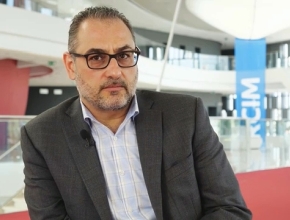Dr Najib Rahman is a professor of respiratory medicine at University of Oxford, director of the Oxford Respiratory Trials Unit, and coauthor of multiple guidelines on pleural disease.
If you were to name the 3 most important recent advances in the treatment of pleural diseases, what would they be?
Najib Rahman, MD, DPhil, MSc: So, I think this is a really important and meaningful question. The 3 most important advances in the treatment of pleural disease… I would say, in terms of patient safety, the most important advancement is the widespread use of thoracic ultrasound. Thoracic ultrasound has hugely improved safety, improves accuracy, and gives us extra diagnostic yield and extra diagnostic information. And I think anybody approaching pleural disease should use ultrasound. So, that’s my first [advance].
The second major advance in the treatment of pleural disease is the use of tissue plasminogen activator (tPA)/DNAse for patients with pleural infection. This was [reported in] a New England Journal [of Medicine] paper (doi: 10.1056/NEJMoa1012740) that we published in 2011 and, since then, it’s become widely used across the world. And in fact we are now testing it as to whether it is better than surgery in the treatment of pleural infection.
And my third treatment option that, I think, has revolutionized [the treatment of] pleural disease is the use of the indwelling pleural catheter. So, rather than [seeing] all of these patients with malignant [pleural] effusion having to be admitted to hospital, we now have an alternative treatment that allows them to go home and, indeed, a treatment option for patients, in whom pleurodesis fails or the lung is trapped, ie, won’t expand fully.
 English
English
 Español
Español
 українська
українська










